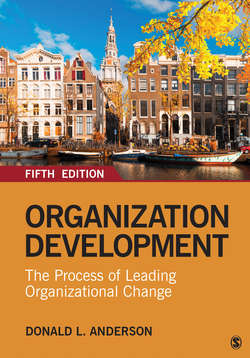Читать книгу Organization Development - Donald L. Anderson - Страница 69
На сайте Литреса книга снята с продажи.
Models of Organizational Change Consistent With a Systems Theory Approach
ОглавлениеAs might be expected given its popularity as a theoretical model for organizations, models of organizational change consistent with a systems theory approach predominate. What they may lack in specificity, they make up in helping the practitioner to see patterns and their relationships in a broader sense. We can thus see patterns in a large volume of data (in fact, we can use these models to analyze data, a point we will return to in a later chapter). They can help us see possible relationships that we may have missed, and they can help us see missing pieces that we might have expected to see but did not. Finally, they can help us see possible areas for change (Burke, 2002). The model may point out the influence of one area on another that may prompt us to note that we devote too much attention to the first topic and not enough to the latter. In short, models are like colored lenses that highlight some aspects of the terrain while they may obscure others, but in any case, they will help us see new things that we may not have seen before.
Four common models of organizational behavior and change consistent with a systems theory perspective are Lewin’s three-phase model, the Nadler-Tushman congruence model, the Burke-Litwin model, and the Weisbord Six-Box Model. Each of these offers a different perspective on organizational analysis, highlighting a different approach to organizational change.
